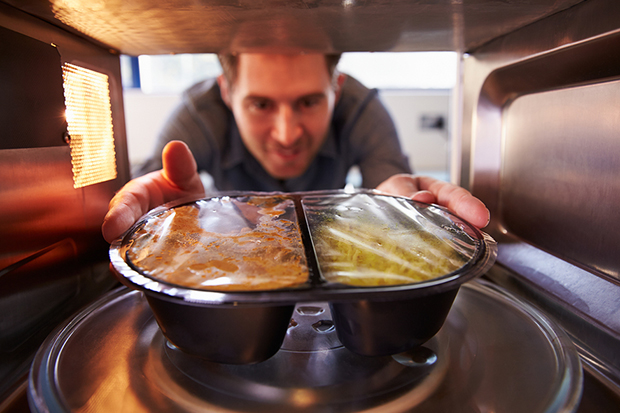Plastic containers and wraps you should and shouldn’t be using in the microwave
REHEATING last night’s dinner in the plastic container you saved from your favourite takeaway shop? Is it safe? Gabriella Ariffin speaks to an analytical chemistry expert about the health risks and what you should and shouldn’t be using in the microwave. 
Microwaves are a must-have kitchen appliance for most students. It provides a quick way to prepare meals, and just as, if not more importantly, for reheating meals at home, college or university.
But are there plastic containers and wraps you should or shouldn’t be using? Which ones are likely to melt? And is eating food out of microwaved plastic containers harmful to your health?
The answers might surprise you. Dr Oliver Jones, a lecturer in analytical chemistry at RMIT University, explains that all plastic containers are polymers, and contain chemicals such as polystyrene, bisphenol A (BPA) and phthalates.
Polymers are made up of repeating monomers, and sometimes not all the small molecules are linked up, especially in cheaper plastics.
However, while it is true that some of it may leak from containers into food especially when microwaved, and concerns that BPA exposure may cause health problems, Dr Jones says the quantities are too small to be harmful for health.
He says there have been no cases on record of anyone who has faced health risks from consuming low concentrations of chemicals from plastics.
“You would only get some milligrams of it (when you microwave plastic containers) and it won’t harm your body.”
Indeed, according to Food Standards Australia New Zealand, extremely large amounts of foods and beverages would need to be consumed to reach the tolerable daily intake for BPA. The tolerable daily intake (or TDI) is an internationally established safe level for chemicals like BPA. It’s the amount that can be safely consumed per day, every day.
A nine-month-old baby weighing 9kg for example, would have to eat more than 1kg of canned baby custard containing BPA every day to reach the TDI, assuming that the custard contained the highest level of BPA found (420 parts per billion).
For those who wish to play it safe, the best thing to do is to look for the “microwave safe” label on containers to ensure your safety when heating your meals.
A “BPA-free” logo however, says Dr Jones, may make little difference if you’re seeking to avoid harmful chemicals leaching into your food as manufacturers are likely to replace BPA with other similar compounds to make their plastics see-through and clear.
He says although other chemicals such as bisphenol S and B are more stable under heat, there is not yet further research available about its potential health risks to our bodies.
It is also important to know that plastic containers which are meant for cold storage, such as tubs for yogurt and margarine, and water bottles, should not be microwaved.
Dealing with microwave safe plastic wraps however, may be a little trickier. Although plastic wraps that are microwave safe are more tolerable to heat, they may still melt when placed in direct contact with hot food.
To avoid this, manufactures advice consumers to ensure there is sufficient space between the food and plastic wrap before microwaving.
Some tips
- Always check for ‘microwave safe’ logo before heating food in plastic containers.
- Leave sufficient space between your food and microwave safe plastic wrap
- Never microwave containers meant for cold storage, water bottles, grocery bags and aluminium foils.
- If unsure, transfer your food to ceramics or glass containers instead.
